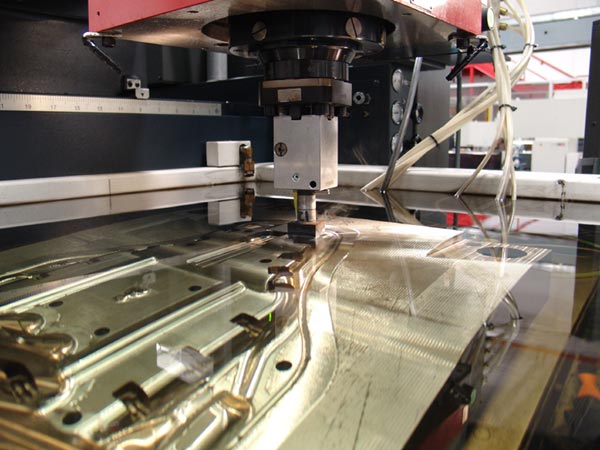|
E. O. Paton Electric Welding Institute
E. O. Paton Electric Welding Institute ( uk, Інститут електрозварювання ім.Є.О.Патона) is a welding research institution situated in Kyiv, Ukraine. It is named after its founder, Professor Evgeny Paton. The institute was established in 1934 following the decree of Ukrainian Academy of Sciences. The institute was formed from the Laboratories of the State Electric Welding Committee and Electric Welding department of Kyiv Polytechnic Institute in 1934. Until 1991 it was known as ''Ukrainian SSR Academy of Sciences Electric Welding Institute''. The first leader of the institute was Evgeny Paton. For many years the institute was directed by Evgeny Paton's son, Borys Paton. Since 2020 following Borys Paton's death the institute is led by Ihor Krivtsun Currently the institute research staff includes 70 Doctor of Science, 250 Kandidats of Science. The institute is the main Ukrainian research facility dealing with electric welding and electric ... [...More Info...] [...Related Items...] OR: [Wikipedia] [Google] [Baidu] |
Electrical Discharge Machining
Electrical discharge machining (EDM), also known as spark machining, spark eroding, die sinking, wire burning or wire erosion, is a metal fabrication process whereby a desired shape is obtained by using electrical discharges (sparks). Material is removed from the work piece by a series of rapidly recurring current discharges between two electrodes, separated by a dielectric liquid and subject to an electric voltage. One of the electrodes is called the tool-electrode, or simply the or , while the other is called the workpiece-electrode, or . The process depends upon the tool and work piece not making physical contact. When the voltage between the two electrodes is increased, the intensity of the electric field in the volume between the electrodes becomes greater, causing dielectric break down of the liquid, and produces an electric arc. As a result, material is removed from the electrodes. Once the current stops (or is stopped, depending on the type of generator), new liquid d ... [...More Info...] [...Related Items...] OR: [Wikipedia] [Google] [Baidu] |
Institutes Of The National Academy Of Sciences Of Ukraine
An institute is an organisational body created for a certain purpose. They are often research organisations (research institutes) created to do research on specific topics, or can also be a professional body. In some countries, institutes can be part of a university or other institutions of higher education, either as a group of departments or an autonomous educational institution without a traditional university status such as a "university institute" (see Institute of Technology). In some countries, such as South Korea and India, private schools are sometimes referred to as institutes, and in Spain, secondary schools are referred to as institutes. Historically, in some countries institutes were educational units imparting vocational training and often incorporating libraries, also known as mechanics' institutes. The word "institute" comes from a Latin word ''institutum'' meaning "facility" or "habit"; from ''instituere'' meaning "build", "create", "raise" or "educate". U ... [...More Info...] [...Related Items...] OR: [Wikipedia] [Google] [Baidu] |
Research Institutes In Kyiv
Research is "creative and systematic work undertaken to increase the stock of knowledge". It involves the collection, organization and analysis of evidence to increase understanding of a topic, characterized by a particular attentiveness to controlling sources of bias and error. These activities are characterized by accounting and controlling for biases. A research project may be an expansion on past work in the field. To test the validity of instruments, procedures, or experiments, research may replicate elements of prior projects or the project as a whole. The primary purposes of basic research (as opposed to applied research) are documentation, discovery, interpretation, and the research and development (R&D) of methods and systems for the advancement of human knowledge. Approaches to research depend on epistemologies, which vary considerably both within and between humanities and sciences. There are several forms of research: scientific, humanities, artistic, economic ... [...More Info...] [...Related Items...] OR: [Wikipedia] [Google] [Baidu] |
Welding Organizations
Welding is a fabrication process that joins materials, usually metals or thermoplastics, by using high heat to melt the parts together and allowing them to cool, causing fusion. Welding is distinct from lower temperature techniques such as brazing and soldering, which do not melt the base metal (parent metal). In addition to melting the base metal, a filler material is typically added to the joint to form a pool of molten material (the weld pool) that cools to form a joint that, based on weld configuration (butt, full penetration, fillet, etc.), can be stronger than the base material. Pressure may also be used in conjunction with heat or by itself to produce a weld. Welding also requires a form of shield to protect the filler metals or melted metals from being contaminated or oxidized. Many different energy sources can be used for welding, including a gas flame (chemical), an electric arc (electrical), a laser, an electron beam, friction, and ultrasound. While often an industri ... [...More Info...] [...Related Items...] OR: [Wikipedia] [Google] [Baidu] |
Research Institutes In The Soviet Union
Research is "creative and systematic work undertaken to increase the stock of knowledge". It involves the collection, organization and analysis of evidence to increase understanding of a topic, characterized by a particular attentiveness to controlling sources of bias and error. These activities are characterized by accounting and controlling for biases. A research project may be an expansion on past work in the field. To test the validity of instruments, procedures, or experiments, research may replicate elements of prior projects or the project as a whole. The primary purposes of basic research (as opposed to applied research) are documentation, discovery, interpretation, and the research and development (R&D) of methods and systems for the advancement of human knowledge. Approaches to research depend on epistemologies, which vary considerably both within and between humanities and sciences. There are several forms of research: scientific, humanities, artistic, econ ... [...More Info...] [...Related Items...] OR: [Wikipedia] [Google] [Baidu] |
Materials Science Institutes
Material is a substance or mixture of substances that constitutes an object. Materials can be pure or impure, living or non-living matter. Materials can be classified on the basis of their physical and chemical properties, or on their geological origin or biological function. Materials science is the study of materials, their properties and their applications. Raw materials can be processed in different ways to influence their properties, by purification, shaping or the introduction of other materials. New materials can be produced from raw materials by synthesis. In industry, materials are inputs to manufacturing processes to produce products or more complex materials. Historical elements Materials chart the history of humanity. The system of the three prehistoric ages ( Stone Age, Bronze Age, Iron Age) were succeeded by historical ages: steel age in the 19th century, polymer age in the middle of the following century (plastic age) and silicon age in the second half of t ... [...More Info...] [...Related Items...] OR: [Wikipedia] [Google] [Baidu] |
Engineering Research Institutes
Engineering is the use of scientific principles to design and build machines, structures, and other items, including bridges, tunnels, roads, vehicles, and buildings. The discipline of engineering encompasses a broad range of more specialized fields of engineering, each with a more specific emphasis on particular areas of applied mathematics, applied science, and types of application. See glossary of engineering. The term ''engineering'' is derived from the Latin ''ingenium'', meaning "cleverness" and ''ingeniare'', meaning "to contrive, devise". Definition The American Engineers' Council for Professional Development (ECPD, the predecessor of ABET) has defined "engineering" as: The creative application of scientific principles to design or develop structures, machines, apparatus, or manufacturing processes, or works utilizing them singly or in combination; or to construct or operate the same with full cognizance of their design; or to forecast their behavior under specif ... [...More Info...] [...Related Items...] OR: [Wikipedia] [Google] [Baidu] |
National Academy Of Sciences Of Ukraine
The National Academy of Sciences of Ukraine (NASU; uk, Національна академія наук України, ''Natsional’na akademiya nauk Ukrayiny'', abbr: NAN Ukraine) is a self-governing state-funded organization in Ukraine that is the main center of development of science and technology by coordinating a system of research institutes in the country. It is the main research oriented organization along with the five other academies in Ukraine specialized in various scientific disciplines. NAS Ukraine consists of numerous departments, sections, research institutes, scientific centers and various other supporting scientific organizations. The Academy reports on the annual basis to the Cabinet of Ministers of Ukraine. The presidium of the academy is located at vulytsia Volodymyrska, 57, across the street from the Building of Pedagogical Museum, which was used to host the Central Council during the independence period of 1917-18. In 1919–1991 it was a republ ... [...More Info...] [...Related Items...] OR: [Wikipedia] [Google] [Baidu] |
Kandidat Of Science
Candidate of Sciences (russian: кандидат наук, translit=kandidat nauk) is the first of two doctoral level scientific degrees in Russia and the Commonwealth of Independent States. It is formally classified as UNESCO's ISCED level 8, "doctoral or equivalent". It may be recognized as Doctor of Philosophy, usually in natural sciences, by scientific institutions in other countries. Former Soviet countries also have a more advanced degree, Doctor of Sciences. Overview The degree was first introduced in the USSR on 13 January 1934 by a decision of the Council of People's Commissars of the USSR, all previous degrees, ranks and titles having been abolished immediately after the October Revolution in 1917. Academic distinctions and ranks were viewed as survivals of capitalist inequality and hence were to be permanently eliminated. The original decree also recognized some degrees earned prior to 1917 in Tsarist Russia and elsewhere. To attain the Candidate of Sciences d ... [...More Info...] [...Related Items...] OR: [Wikipedia] [Google] [Baidu] |








